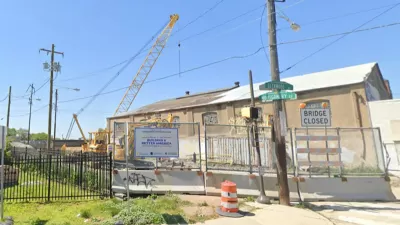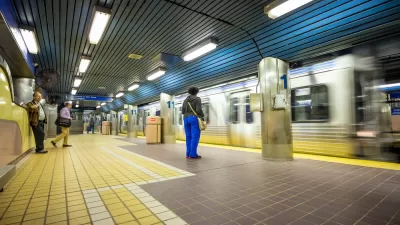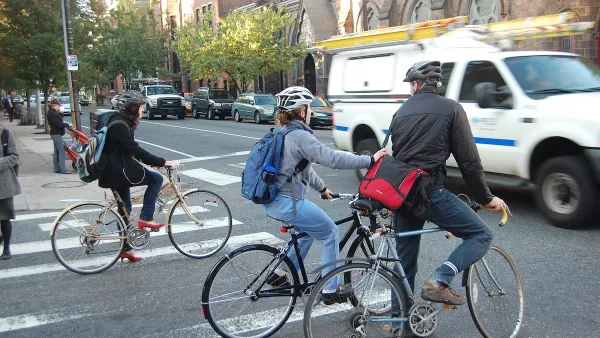With some extra cash on hand (rare, isn't it?) the Delaware River Port Authority will offer a discount for drivers that cross authority bridges 18 times a month. But what about transit riders?
"A discount for E-ZPass customers who regularly cross Delaware River Port Authority bridges is beginning next month, giving an $18 break to regular commuters," reports Jason Laughlin. Essentially the discount will offer an $18 rebate for anyone who drives across the bridges 18 times in a month.
The toll rebate essential reverses toll increases implemented by the DRPA—from $3 to $4 per trip in 2008, and another dollar in 2011. "Up to 29,000 people are eligible to participate in the discount program," explains Laughlin, so the "DRPA predicts losing $6.4 million in bridge revenue annually with the program."
Not only does the discount for people who drive more contradict the case for congestion pricing as a critical role in alleviating congestion in urban areas—it also means cars will pay even less of their way than they already do.
But more than that, transit riders won't even be getting the same discount. In fact, according to Larry Davis, a member of the authority's Citizens Advisory Committee quoted in the article, 14,000 daily PATCO riders pay more per daily commute than those who drive across the bridge. Laughlin reports that Davis has "started a petition to extend a commuter discount to rail riders, too. He has gained more than 100 signatures so far. He says he doubts he'll be able to reverse the DRPA's policy, but believes that it's important someone speak up for PATCO customers."
FULL STORY: DRPA grants discounts to frequent bridge travelers

Maui's Vacation Rental Debate Turns Ugly
Verbal attacks, misinformation campaigns and fistfights plague a high-stakes debate to convert thousands of vacation rentals into long-term housing.

Planetizen Federal Action Tracker
A weekly monitor of how Trump’s orders and actions are impacting planners and planning in America.

San Francisco Suspends Traffic Calming Amidst Record Deaths
Citing “a challenging fiscal landscape,” the city will cease the program on the heels of 42 traffic deaths, including 24 pedestrians.

Defunct Pittsburgh Power Plant to Become Residential Tower
A decommissioned steam heat plant will be redeveloped into almost 100 affordable housing units.

Trump Prompts Restructuring of Transportation Research Board in “Unprecedented Overreach”
The TRB has eliminated more than half of its committees including those focused on climate, equity, and cities.

Amtrak Rolls Out New Orleans to Alabama “Mardi Gras” Train
The new service will operate morning and evening departures between Mobile and New Orleans.
Urban Design for Planners 1: Software Tools
This six-course series explores essential urban design concepts using open source software and equips planners with the tools they need to participate fully in the urban design process.
Planning for Universal Design
Learn the tools for implementing Universal Design in planning regulations.
Heyer Gruel & Associates PA
JM Goldson LLC
Custer County Colorado
City of Camden Redevelopment Agency
City of Astoria
Transportation Research & Education Center (TREC) at Portland State University
Jefferson Parish Government
Camden Redevelopment Agency
City of Claremont





























